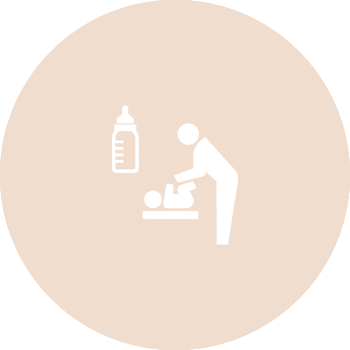Breastfeeding: Understanding and Overcoming Challenges
Breastfeeding is a natural way to nourish your baby, but it doesn't always come easily. Many women face difficulties, and one common reason for stopping is the belief that they're not producing enough milk. In this article, lactation consultant Stacey Zimmels explains how milk production works, how to ensure your baby is getting enough, and offers tips to increase milk supply if needed.
Establishing and Maintaining Milk Supply
In the initial days after birth, breast milk production is driven by hormones. Following the delivery of the placenta, progesterone levels drop rapidly, triggering a rise in prolactin, the hormone responsible for milk production. During this time, you produce colostrum, the baby’s first milk. Between days 2 and 4, colostrum transitions into mature milk, and milk production shifts to a supply and demand process, with hormonal assistance.
Frequent and effective breastfeeding sends signals to produce more milk. Essentially, the more you breastfeed and the more milk your baby consumes, the easier it is to stimulate milk production. The best indicators that your baby is feeding well and that you are producing enough milk include the right number of wet and dirty diapers for their age and consistent weight gain.

Causes of Low Breast Milk Supply
There are two main types of low milk supply: primary and secondary. Primary low milk supply can result from conditions such as diabetes, insufficient glandular tissue, breast surgery, or complications like a retained placenta or severe blood loss. These causes are rare, and most women can produce enough milk.
Secondary low milk supply is more common and typically results from infrequent or inefficient breastfeeding. This can occur if the baby is not feeding often enough or effectively. Factors like early use of pacifiers, scheduled feeding times, or only offering one breast per feed can impact milk supply. Additionally, supplementing with formula due to perceived low supply can reduce breastfeeding frequency and milk production.

Recognizing Adequate Milk Supply
The following are not signs of low milk supply if your baby is gaining weight and producing enough wet and dirty diapers:
- Softer or non-leaking breasts after the initial weeks.
- Baby drinking from a bottle after breastfeeding due to their natural suck reflex.
- Cluster feeding, which is normal and involves periods of frequent feeding.
- Baby being unsettled and wanting to stay in your arms, not necessarily due to hunger.
- Frequent night waking, even after the early weeks.
- Low milk output during pumping, which is not an accurate measure of supply.
- Frequent feeding, which can be normal behavior.
Increasing Milk Supply
To increase milk supply, identify the cause of low supply and ensure your baby is getting enough milk. This might involve expressing or pumping milk in addition to breastfeeding, and feeding any extra milk to your baby. A plan combining nursing, pumping, and topping up with extra milk, known as triple feeding, can be effective but is meant for short-term use.

Here are some tips to increase milk supply:
For breastfeeding:
- Nurse more frequently, including at night.
- Practice responsive breastfeeding.
- Offer both breasts at each feed.
- Use an at-breast supplementer if topping up is needed.
- Switch feed between breasts multiple times.
- Have plenty of skin-to-skin contact.
For pumping:
- Have skin-to-skin contact before pumping.
- Increase the frequency of pumping sessions.
- Pump both breasts simultaneously.
- Use a hospital-grade breast pump if necessary.
- Ensure the pumping shield fits correctly.
- Massage breasts and stimulate nipples before pumping.
- Use hands-on techniques during pumping.
- Try power pumping to mimic cluster feeding.
Some women may benefit from galactagogues, substances that promote lactation, like Fenugreek and Goat's Rue (herbal) or Domperidone (medical). Always consult with a physician or herbalist before use.
Additional Support
If you suspect low milk supply, seek early, qualified professional support from a lactation consultant. They can conduct a comprehensive assessment and create a personalized plan to support your lactation and baby’s feeding.

Before your baby’s birth, consider attending antenatal classes at a local Children’s Centre for guidance on baby care and breastfeeding. The NHS offers resources like the NHS Bot Start4Life Breastfeeding Friend, which provides answers through Facebook Messenger, Google Home, or Amazon Alexa.





















